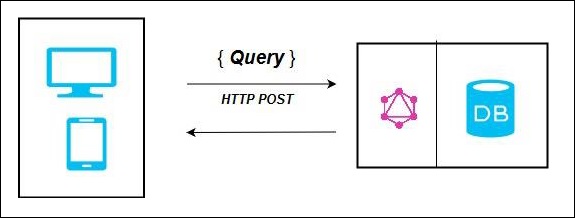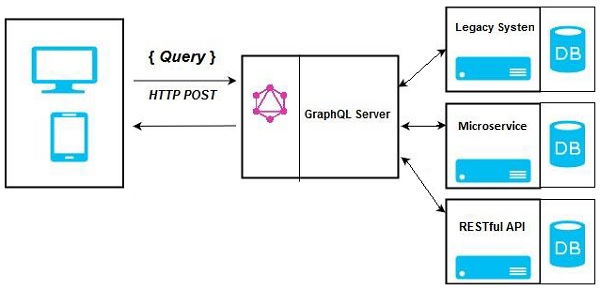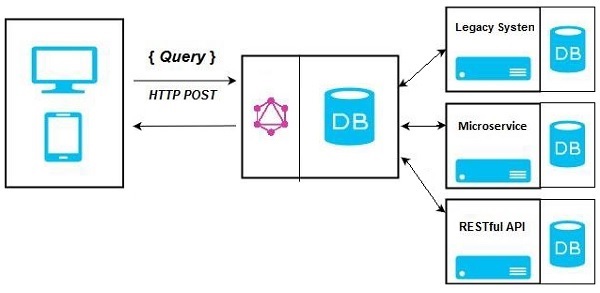
- GraphQL Tutorial
- GraphQL - Home
- GraphQL - Introduction
- GraphQL - Environment Setup
- GraphQL - Architecture
- GraphQL - Application Components
- GraphQL - Example
- GraphQL - Type System
- GraphQL - Schema
- GraphQL - Resolver
- GraphQL - Query
- GraphQL - Mutation
- GraphQL - Validation
- GraphQL - JQuery Integration
- GraphQL - React Integration
- GraphQL - Apollo Client
- GraphQL - Authenticating Client
- GraphQL - Caching
- GraphQL Useful Resources
- GraphQL - Quick Guide
- GraphQL - Useful Resources
- GraphQL - Discussion
GraphQL - Architecture
GraphQL is a specification that describes the behavior of a GraphQL server. It is a set of guidelines on how requests and responses should be handled like supported protocols, format of the data that can be accepted by the server, format of the response returned by the server, etc. The request made by a client to the GraphQL server is called a Query. Another important concept of GraphQL is its transport layer agnostics. It can be used with any available network protocol like TCP, websocket or any other transport layer protocol. It is also neutral to databases, so you can use it with relational or NoSQL databases.
GraphQL Server can be deployed by using any of the three methods listed below −
- GraphQL server with connected database
- GraphQL server that integrates existing systems
- Hybrid approach
GraphQL Server with Connected Database
This architecture has a GraphQL Server with an integrated database and can often be used with new projects. On the receipt of a Query, the server reads the request payload and fetches data from the database. This is called resolving the query. The response returned to the client adheres to the format specified in the official GraphQL specification.

In the above diagram, GraphQL server and the database are integrated on a single node. The client (desktop/mobile) communicates with GraphQL server over HTTP. The server processes the request, fetches data from the database and returns it to the client.
GraphQL Server Integrating Existing Systems
This approach is helpful for companies which have legacy infrastructure and different APIs. GraphQL can be used to unify microservices, legacy infrastructure and third-party APIs in the existing system.

In the above diagram, a GraphQL API acts as an interface between the client and the existing systems. Client applications communicate with the GraphQL server which in turn resolves the query.
Hybrid Approach
Finally, we can combine the above two approaches and build a GraphQL server. In this architecture, the GraphQL server will resolve any request that is received. It will either retrieve data from connected database or from the integrated API’s. This is represented in the below figure −
